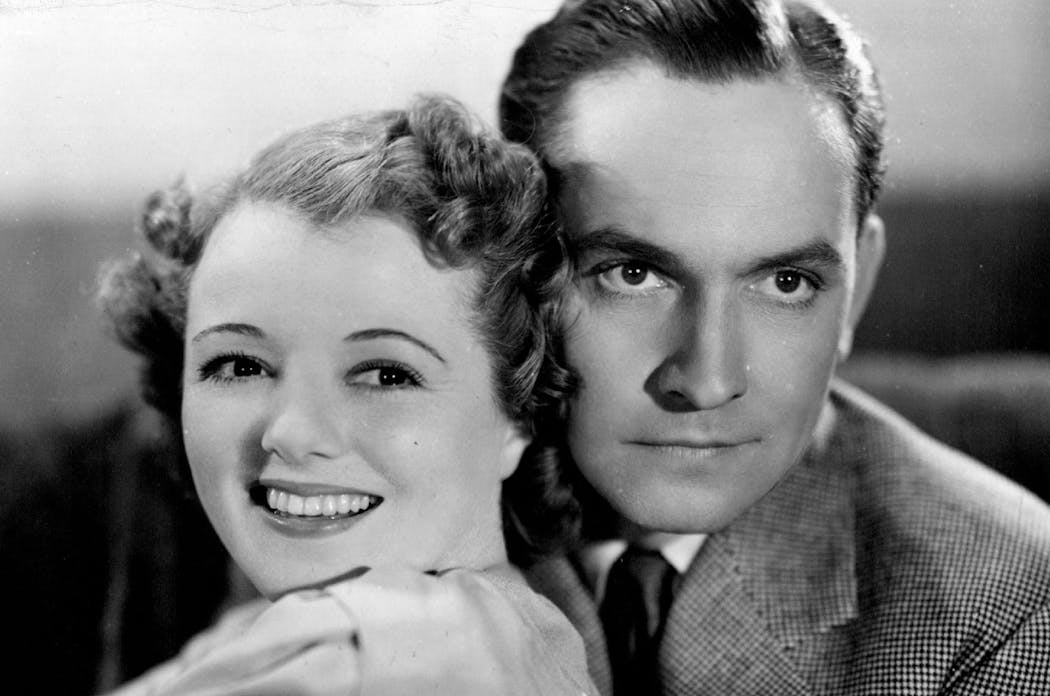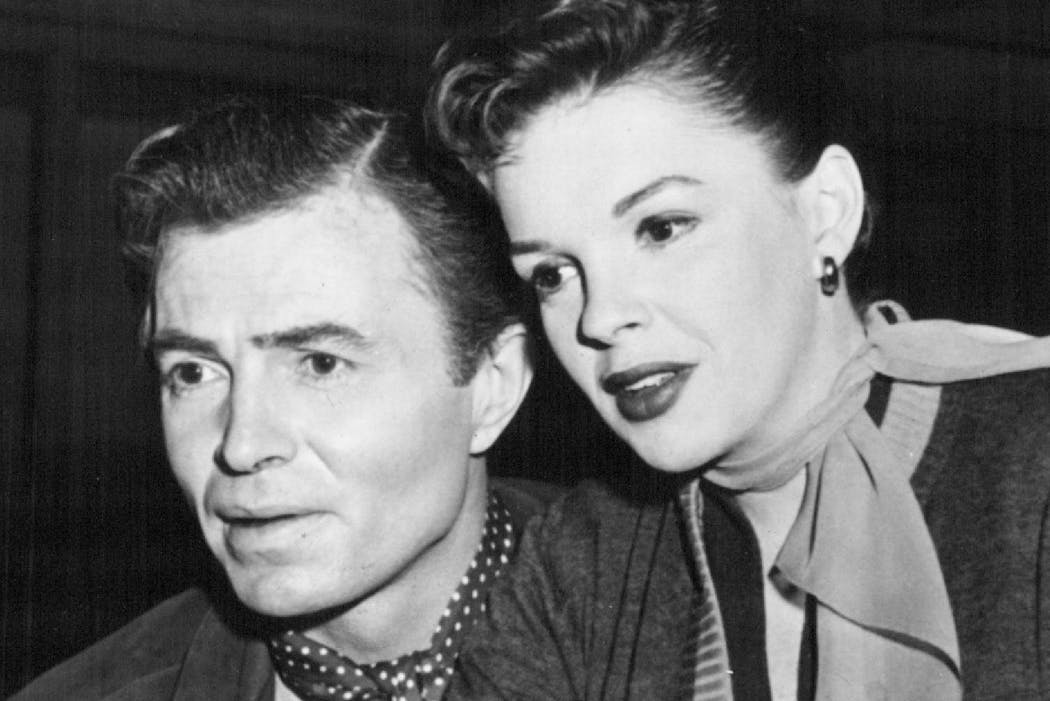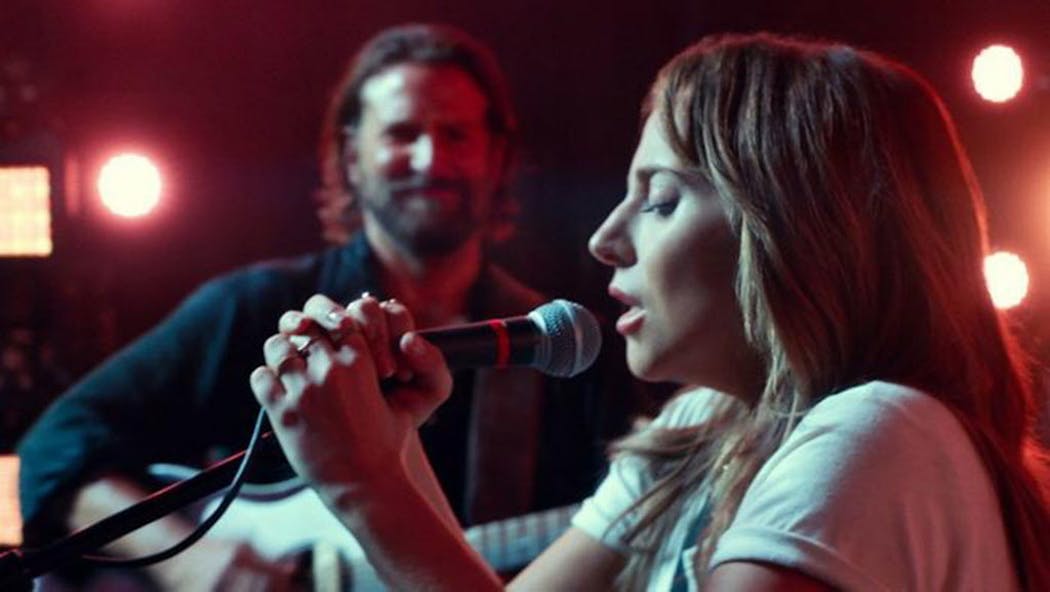It must be an unwritten rule that each generation gets its own version of "A Star Is Born," that timeless tale of a young up-and-comer inextricably bound to a self-destructive has-been — of two people who love and, above all, desperately need each other. With Friday's opening of the latest in the oeuvre, we take a look at the four films, whose similarities ultimately outweigh their differences.
1937 Janet Gaynor & Fredric March
Him: Norman Maine.
Her: Esther Blodgett/Vicki Lester.
Screenplay: Co-written by legendary wit Dorothy Parker.
High point: Vicki's debut film, after which the words of the title are whispered in her ear.
Low point: Norman ruins Vicki's big night on a national stage.
Analysis: The original sets the template. A shy girl from North Dakota (apparently as far as you could get from Hollywood) dreams of movie stardom. After a chance encounter with her idol, a notorious sot whose "work is interfering with his drinking" (pure Parker), Esther is transformed into Vicki and finds herself on a meteoric rise to fame. Gaynor makes a better country mouse than a movie star; we never do see much evidence of what makes her so popular. March is more convincing as a tortured man who destroys everything he loves.
Rating: ⋆⋆⋆
1954 Judy Garland & James Mason
Him: Norman Maine.
Her: Esther Blodgett/Vicki Lester.
Screenplay: Adapted by celebrated playwright Moss Hart.
High point: The gorgeous, if overlong, movie-within-a-movie that puts Vicki's name in lights.
Low point: Norman ruins Vicki's big night on a national stage.
Analysis: When you've got a star with the extravagant talent of Judy Garland, you showcase her. Producer Sid Luft (Garland's husband) insisted on the elaborate production numbers that stretch the run time to almost three hours, but they certainly sell the central conceit. Garland's Esther/Vicki is outwardly more confident and less needy than Gaynor's (she already has a singing career of sorts when she meets Norman), which subtly alters the power dynamic. As for Mason, he just can't get past that patrician exterior to properly wallow in depravity. No matter; this is Garland's film all the way.
Rating: ⋆⋆⋆½
1976 Barbra Streisand & Kris Kristofferson
Him: John Norman Howard.
Her: Esther Hoffman.
Screenplay: Adapted by husband/wife authors John Gregory Dunne and Joan Didion.
High point: Esther's rendition of the wedding staple "Evergreen," which somehow still manages to sound fresh.
Low point: John Norman ruins Esther's big night on a national stage.
Analysis: This version completes the shift from movies to music, with John Norman as a rock star who can fill a stadium and Esther (no name change here) as a nightclub singer with the big voice of, well, Barbra Streisand. The hirsute Kristofferson, strutting sans shirt, looks and sounds the part, but he's just too pretty to ever get truly down and dirty. Yet this is the first of the films to show how big a star he is, letting us feel more acutely his fall from grace. Producer Jon Peters fills the screen with his sweetheart; indeed, at the end John Norman is all but forgotten as Esther belts out one final number that's all about Esther, or, rather, Babs.
Rating: ⋆⋆
2018 Lady Gaga & Bradley Cooper
Him: Jackson Maine.
Her: Ally. Just Ally.
Screenplay: Co-adapted by Cooper, who also directed.
High point: Jackson pulls Ally onto the stage to sing her own composition.
Low point: Jackson ruins Ally's big night on a national stage.
Analysis: Did they finally get it right? All the pieces come together in this one, starting with the enormously appealing Lady Gaga, who channels Gaynor's pluck, Garland's vulnerability and Streisand's command of the stage. A (movie) star truly is born. Cooper, meanwhile, is the first of the men to really convince us he's hit rock bottom. Sweaty, greasy, needy, dissolute, he betrays no vanity and fittingly cedes the screen to his co-star. The one line of dialogue that is uttered in all four films seems to sum up the plot that never gets old: "I just wanted to take another look at you." This one is worth the look.
Rating: ⋆⋆⋆⋆

The 5 best things our food writers ate this week

A Minnesota field guide to snow shovels: Which one's best?

Summer Camp Guide: Find your best ones here

Lowertown St. Paul losing another restaurant as Dark Horse announces closing






